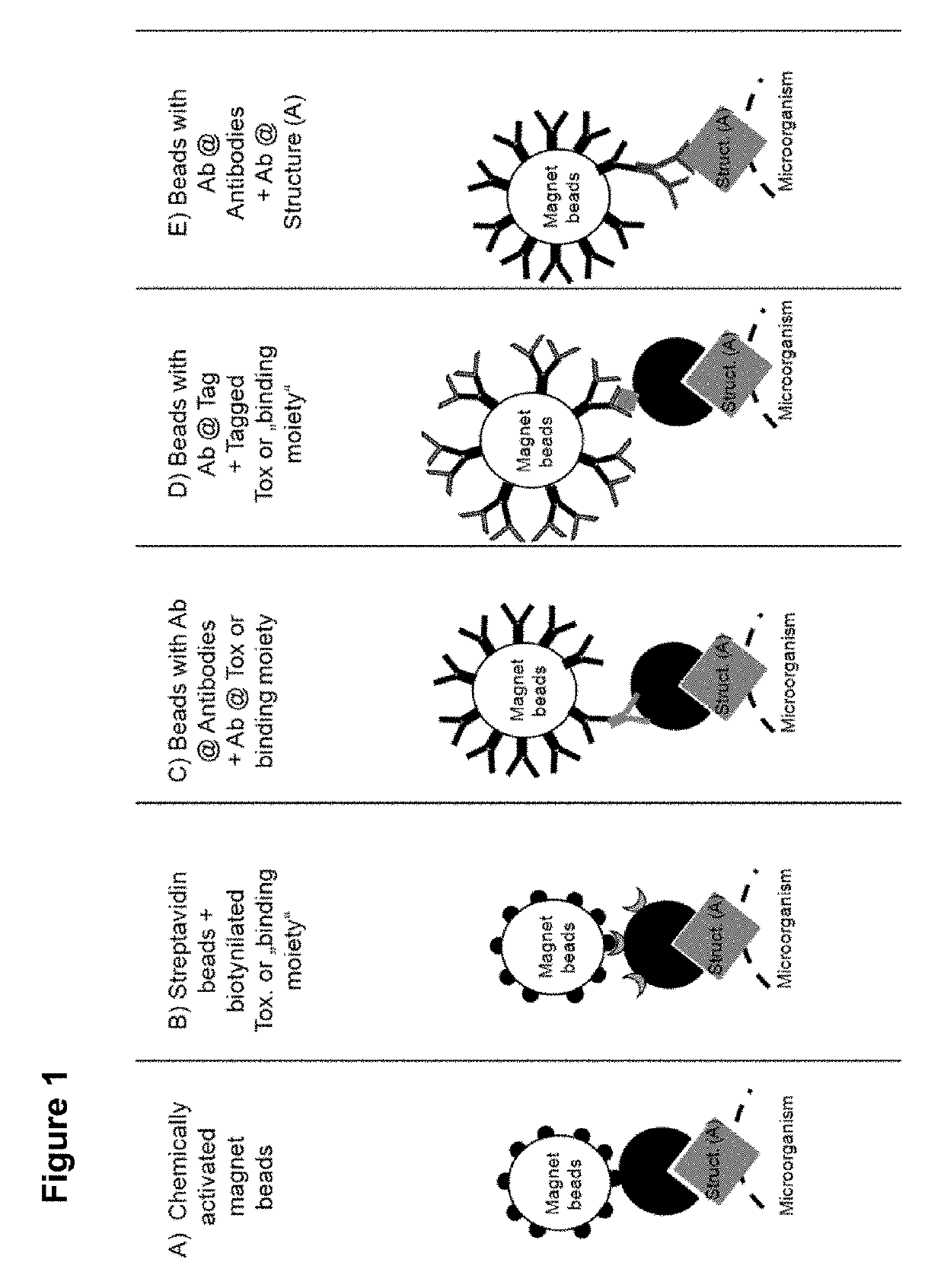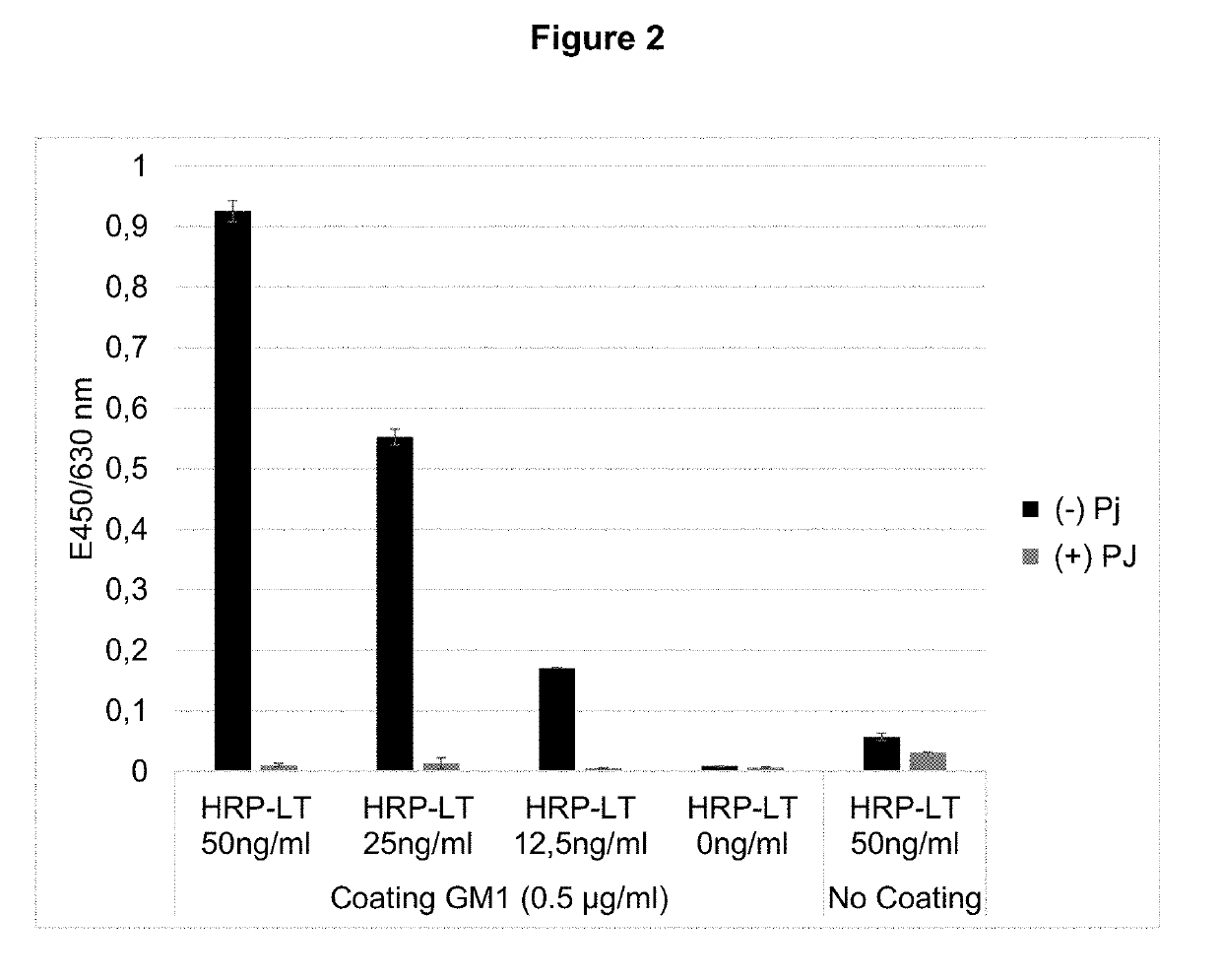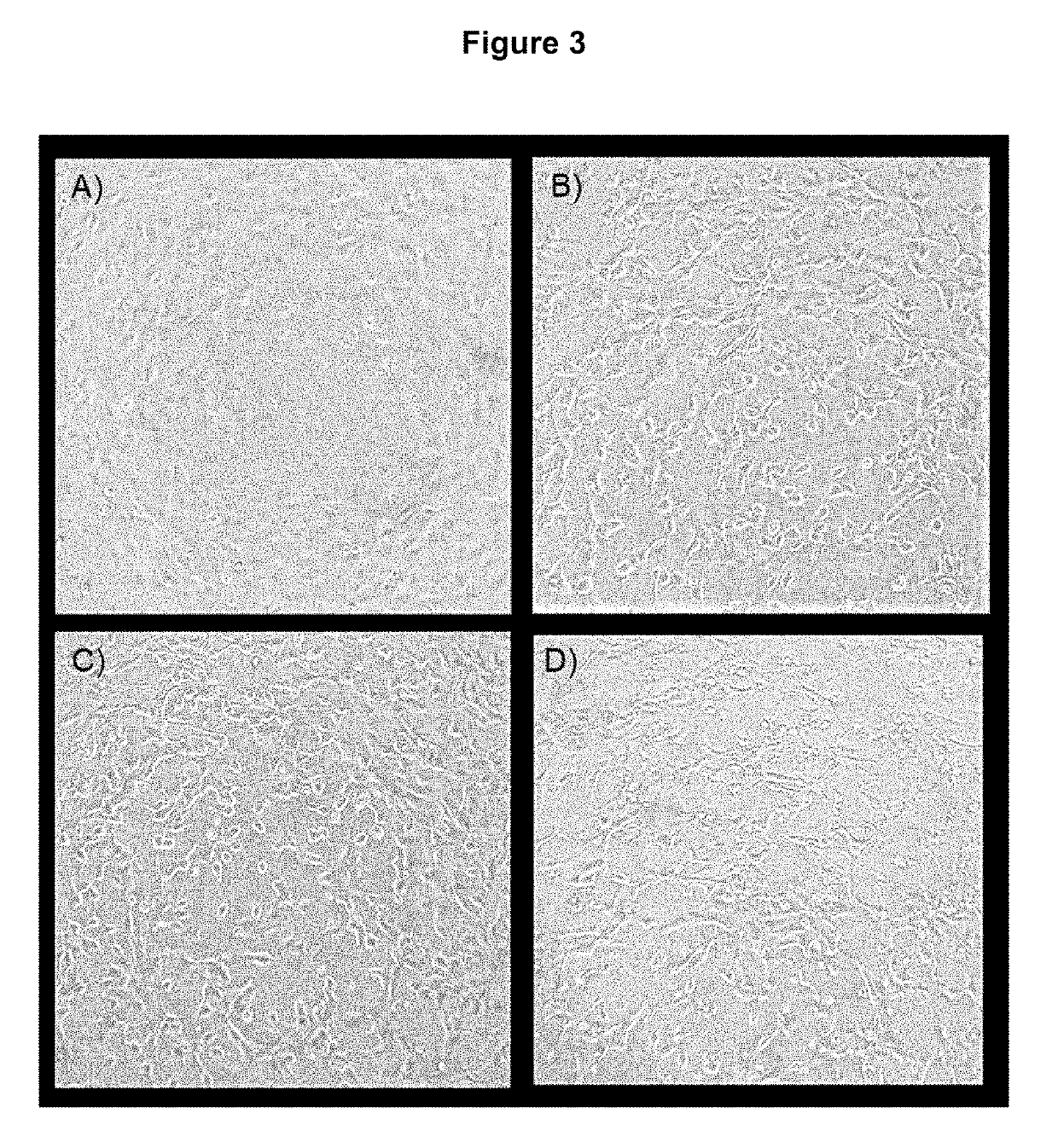Natural microorganisms which are naturally capable of binding toxins and/or toxin receptors
a technology of natural microorganisms and receptors, which is applied in the field of natural microorganisms which are naturally capable of binding toxins and/or toxin receptors, can solve the problems of insufficient effectiveness of vaccines, increased drug resistance, and inability to effectively treat bacteria, so as to reduce the pathogenic effect of pathogenic bacteria
- Summary
- Abstract
- Description
- Claims
- Application Information
AI Technical Summary
Benefits of technology
Problems solved by technology
Method used
Image
Examples
example 1
le Toxin
[0205]This example illustrates the identification of a microorganism(s) naturally expressing a binding moiety for the E. coli heat labile toxin (LT).
[0206]Travelers' Diarrhea (TD) is the most common infectious disease to affect travelers from industrialized countries to developing countries. Enterotoxigenic Escherichia coli (ETEC) is the single most common cause of TD in adult travelers, being responsible for 20 to 40% of all TD cases worldwide. ETEC can be estimated to cause disease in up to 10 million travelers per year. Transmission of ETEC is usually from fecal contaminated food and water. The infection occurs 10 hours to 3 days after exposure typically causing profuse watery diarrhea sometimes with low grade fever, abdominal cramping and / or vomiting. Furthermore, there is growing evidence that acute illness experienced by these visitors to developing countries can lead to more long-term health conditions, ranging from functional gastrointestinal disorder, like irritable...
example 2
oxin
[0263]This example illustrates the identification of microorganisms naturally expressing a binding moiety for the Cholera Toxin (CT).
[0264]Cholera is an acute, diarrheal illness caused by infection of the intestine with the bacterium Vibrio cholerae. An estimated 3 to 5 million cases and over 100,000 deaths occur each year around the world (46). Heat labile toxin (LT) from ETEC and Cholera toxin are highly identical and both were reported to bind the same carbohydrate receptor GM1 described above. However, slightly different specificities were reported (47, 48).
[0265]A natural microorganism naturally expressing a binding moiety for CT may function as delivery vehicle for the surface-displayed binding moieties. It will be delivered directly to the gastrointestinal tract where it would bind the toxin(s), thereby abating, curing, treating or preventing the development of the Vibrio cholerae associated diseases. Such a natural microorganism naturally expressing a binding moiety for ...
example 3
in
[0311]The most common sources for Shiga toxin are the bacteria Shigella dysenteriae and the Shigatoxigenic group of Escherichia coli (STEC). STEC accounts for an estimated 314,000 infections annually in industrialized countries, including approximately 110,000 people in the United States and 97,000 people in the European Union according to the Centers for Diseases Control and Prevention (CDC) and the (EMEA), respectively. Shigella also causes approximately 580,000 cases annually among travelers and military personnel from industrialized countries.
[0312]Symptom induced by STEC may be restricted to mild diarrhea but can evolve to hemorrhagic colitis, and potentially to life-threatening Hemolytic Uremic Syndrome (HUS). HUS is characterized by hemolytic anemia, thrombic thrombocytopenia, and renal failure. About 5% to 20% of STEC infected individuals may develop HUS (CDC). HUS presents a 5% to 10% fatality rate and survivors may have lasting kidney damage (30, 31, 32).
[0313]The most i...
PUM
 Login to View More
Login to View More Abstract
Description
Claims
Application Information
 Login to View More
Login to View More - R&D
- Intellectual Property
- Life Sciences
- Materials
- Tech Scout
- Unparalleled Data Quality
- Higher Quality Content
- 60% Fewer Hallucinations
Browse by: Latest US Patents, China's latest patents, Technical Efficacy Thesaurus, Application Domain, Technology Topic, Popular Technical Reports.
© 2025 PatSnap. All rights reserved.Legal|Privacy policy|Modern Slavery Act Transparency Statement|Sitemap|About US| Contact US: help@patsnap.com



